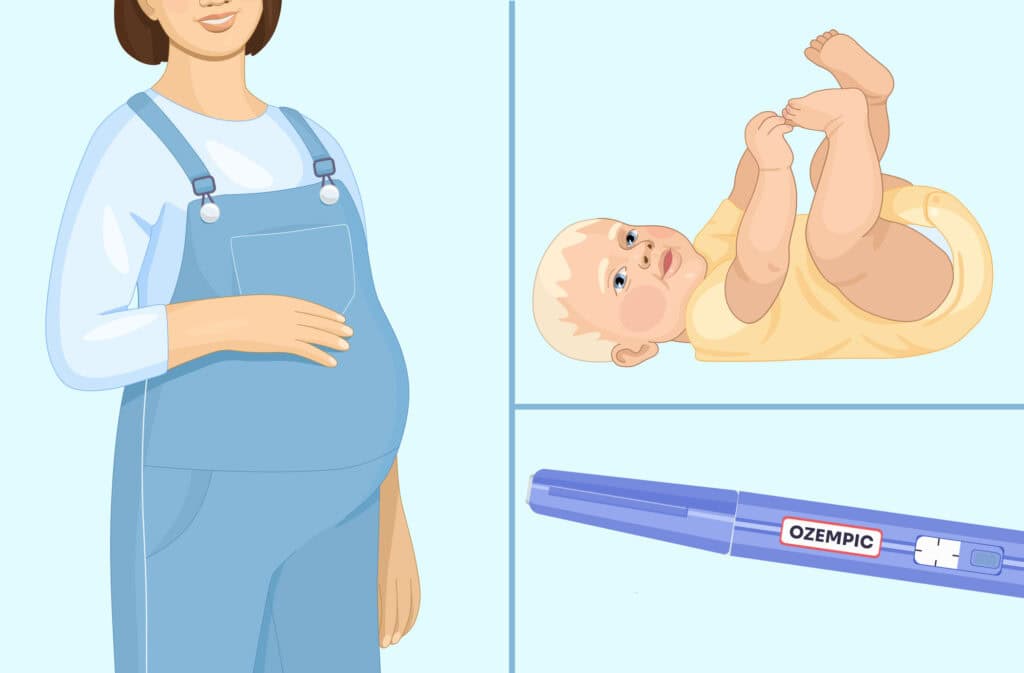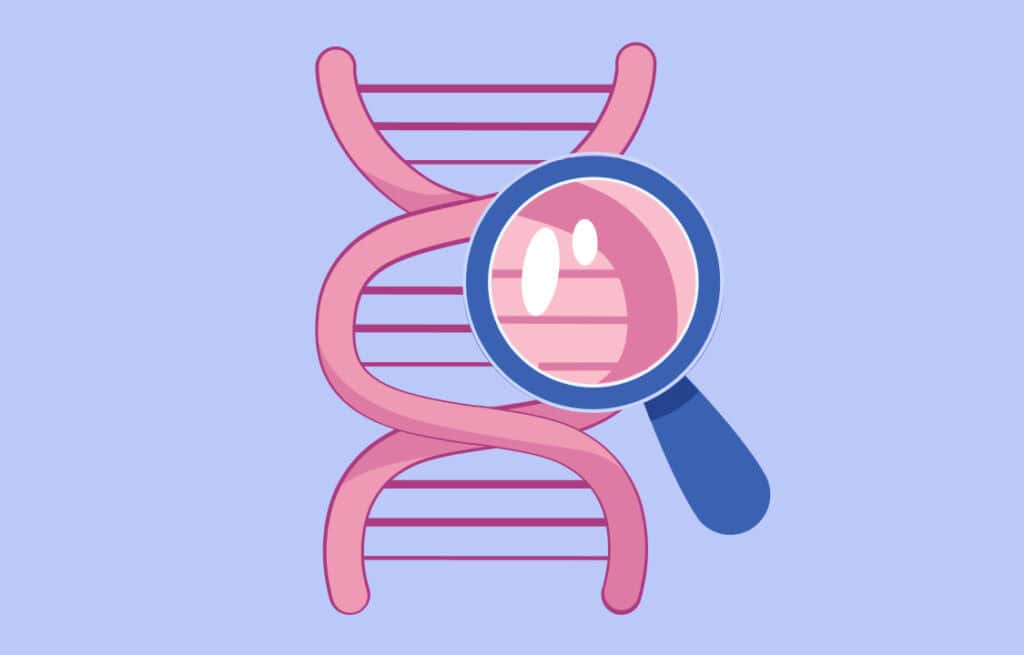Femia > Health Library > Getting Pregnant > Trying to conceive > Best sex positions to get pregnant: Tips for optimizing conception
Best sex positions to get pregnant: Tips for optimizing conception

- Updated Feb 10, 2025
- Published
CRAFTED BY HUMAN
Crafted by human At Femia, we provide accurate and up-to-date information at every stage of your journey, from trying to conceive, pregnancy and postnatal support. All content is created by a real person based on in-depth research and own professional experience. Femia ensures that you will receive expert advice, strict accuracy and a personalized approach from our authors/medical experts. Learn more about our editorial policy.
FACT CHECKED
Fact checked At Femia Health, we maintain the highest standards of editorial excellence in delivering content focused on helping you conceive, guiding you through pregnancy, and supporting you postpartum. Explore our content review principles to learn how we ensure the accuracy and quality of our health and lifestyle tips for every stage of your journey.
The best sex positions to get pregnant—like missionary, doggy style, or ones where the hips are slightly raised—are often suggested as helpful for conception because they may place sperm closer to the cervix. However, no scientific evidence supports that specific positions directly influence conception. Current data indicates that sperm are capable of reaching the egg on their own, regardless of the position.
To improve your chances, try having sex during your fertile window—the few days before and during ovulation—and stay lying down for about 15–20 minutes afterward to help keep the sperm in place.
If you are looking to get pregnant, you might have heard people talk about the best sex positions to get pregnant. Indeed, you might benefit from changing the way you have sex to incorporate more conception-focused positions. For example, standing positions or woman-on-top might not be the most effective while trying to conceive.
Certain sex positions may optimize the chances of pregnancy by supporting the sperm’s journey toward your egg. Sperm should get as deep and close to the cervix as possible, where it enters the womb and travels toward the fallopian tubes—which is where the magic of conception happens.
Femia offers the most accurate tool for determining ovulation and fertile days
Does position matter when trying to conceive?
You might have heard that some sex positions are better than others when trying to get pregnant. Does position matter when trying to conceive, really?
From a scientific perspective, there is no conclusive evidence that a specific sexual position directly impacts pregnancy success rates. In theory, it might, but it hasn’t been proven yet.
Sperm are highly motile and designed to swim through the reproductive tract regardless of the angle of entry. Other factors, such as sperm health, ovulation timing, and overall reproductive health, are far more important than position.
However, some sex positions for pregnancy might enable deeper penetration and reduce the distance sperm must swim to reach the cervix. The idea follows a basic approach to optimizing conception: reduce any barriers for the sperm to meet the egg. It’s worth a shot, at the very least.
👉Find out more: How to get pregnant fast: Tips for conceiving naturally and quickly
Best sex positions for conception

If you and your partner are looking to increase your odds of getting pregnant, you might want to try out a few best positions for conception. Let’s take a look.
- Missionary (man-on-top). This classic position allows for deep penetration, helping to deposit sperm closer to the cervical opening.
- Doggy style (rear entry). This position also enables deep penetration and may help align the cervix in a way that makes it easier for sperm to enter.
- Side-lying (spooning). This relaxed position can still promote closeness and placement of the sperm close to your cervix.
To enhance a pregnancy-friendly sex position like missionary, pop in a pillow underneath your hips. This might help open the way to your cervix.
Remember, the idea is to deposit sperm as close as possible to the cervix so that its commute to your egg is quick and easy. Although we cannot guarantee the efficacy of any of these positions, there is a theoretical possibility that they might work.
How to have sex to get pregnant: Tips for timing
If you are unsure about how to do sex to get pregnant, just start by trying out the best sex positions for conception. However, don’t forget about the importance of timing.
While you shouldn’t be putting sex in your agenda for the day, trying for a baby does require some planning. Timing intercourse in the days leading up to and during ovulation is crucial for maximizing the chances of pregnancy.
When is my fertile window?
The fertile window typically spans the five days before ovulation and the day of ovulation itself. Since sperm can survive in the female reproductive tract for up to five days, having regular sex during this time ensures that there will be sperm ready to fertilize the egg when it is released.
You can track your ovulation by monitoring the appearance of your vaginal discharge (it should be stretchy, clear, or like an egg white), tracking your body temperature, or using ovulation predictor kits.
Some women suffer from thick, hostile cervical mucus that may prevent the sperm from traveling to the egg. This can also make it difficult to tell when your ovulation happens.
Expectorants like Mucinex might help make your cervical mucus thinner—and technically, increase your chances of getting pregnant. Still, it’s best to talk with your trusted healthcare provider before taking any new medication.
Post-sex practices to support conception
While certain post-sex practices are commonly suggested, it’s important to note that scientific evidence does not support all these methods as being directly linked to improved chances of conception. Here’s an overview of common practices:
How long should you lay down after sex?
Lying down for about 15–20 minutes is often recommended to allow sperm to remain near the cervix. However, there is no strong scientific evidence that this practice significantly improves the chances of conception, as sperm can naturally swim towards the egg regardless of your position.
What side to lie on?
Lying on the left side is sometimes suggested to improve circulation and support reproductive health. However, this practice is based on general health recommendations and does not have a proven effect on fertility or conception.
Should you lift up your hips?
Elevating the hips with a pillow or lifting the legs is another common suggestion, as it may help sperm stay closer to the cervix. However, there is no conclusive evidence that this increases the chances of conception. Sperm can still swim towards the egg effectively, even if gravity is not working in their favor.
| Note: While these practices are often shared as tips, the most important factors for conception are timing (such as having sex during your fertile window) and maintaining overall health and wellness. Stress management, a healthy diet, and regular exercise can significantly impact fertility as well. |
Other factors to consider for successful conception
Getting pregnant is not all about sex and finding the best position to get pregnant. Other factors, like your lifestyle and stress levels, also play a role in getting pregnant.
Lifestyle habits
A healthy lifestyle is the cornerstone of fertility and overall health for both you and your partner. To improve your reproductive health and egg quality, make sure that you are eating a balanced diet, exercising regularly, avoiding smoking and too much alcohol, and managing a healthy weight.
Your partner
Your partner’s reproductive health is just as important. Men can improve sperm quality by not smoking, avoiding excessive heat (like hot tubs), and eating a nutrient-rich diet high in antioxidants.
Stress levels
Chronic stress is the number one enemy of hormonal balance and fertility in both men and women. Find ways to get your mind off of everyday life problems and pressure around getting pregnant, such as practicing mindfulness, meditation, or yoga.
👉Find out more: How to put pillow under hips to get pregnant
Common myths about conception and sex positions
Myth 1: The right sex position will get you pregnant.
Believing in a single best sex position to get pregnant can bring you a lot of unnecessary stress or frustration.
Fact: Conception depends on several factors.
Whether you get pregnant depends on many biological factors, such as the quality of the egg and sperm, the timing of ovulation, and the health of your reproductive systems, rather than the position used during sex.
Myth 2: Sperm must be placed a certain way for pregnancy to happen.
You might get pregnant even when the sperm is not deposited right at your cervix. Certain positions, like woman-up or standing positions, can also work.
Fact: Sperm can swim on its own.
Your body is designed to support sperm movement regardless of position, and sperm are motile and capable of swimming through the reproductive tract on their own.
Myth 3: Conception-focused sex positions always work.
Remember that research has not confirmed that any sex position increases your chances of getting pregnant—but, it also hasn’t proven otherwise. Therefore, it’s worth using any tools available to boost your chances of conception.
Fact: A comprehensive strategy might increase your odds of conception.
Focusing on overall reproductive health and reducing stress is a much better way to approach your journey to pregnancy than fixating on position alone.
Femia offers the most accurate tool for determining ovulation and fertile days
Questions from the Femia community
Is one side better to sleep on after sex for conception?
There’s no definitive evidence that sleeping on a certain side after sex improves the chances of conception. However, some suggest that lying on the left side may support better blood circulation, which could boost your overall reproductive health. Make sure to stay comfortable and relaxed, since the way you feel about the whole experience is much more important than the way you sleep afterward.
Can specific positions help with male infertility?
Certain positions, such as missionary or doggy style, may support sperm reaching the cervix. However, these positions are not a solution for male infertility. If male infertility is a concern, you and your partner should reach out to a trusted healthcare provider. They can evaluate factors like sperm count, motility, and morphology, then recommend treatments such as lifestyle changes, medication, or assisted reproductive technologies (like IVF).
How often should we try these positions during my fertile window?
It’s generally recommended to have sex every other day during the fertile window, to provide the best balance between sperm quality and quantity. In essence, you want to have a steady supply of healthy sperm without compromising their motility due to excessive production. Timing sex with your partner in this way also increases the likelihood of sperm being present when the egg is released.
The bottom line
Certain positions, like missionary, doggy style, and those involving hip elevation, are believed to be the best sex positions to get pregnant. They support conception by allowing for deeper penetration and placing sperm closer to the cervix, potentially aiding their journey to the egg.
After sex, it’s a good idea to lie down for 15–20 minutes to allow your body to make the best use of the sperm. While there’s no strong evidence favoring a specific side, some suggest lying or sleeping on the left side might help you get pregnant.
However, the most important factor is to have sex during the fertile window and maintain your overall health through a balanced diet, regular exercise, and keeping your stress levels in check. Remember, it takes time to get pregnant. Be patient and trust the process—hopefully, these tips and tricks will work, and you will be on your pregnancy journey in no time.
References
- Buck Louis, Germaine M., et al. “Stress Reduces Conception Probabilities across the Fertile Window: Evidence in Support of Relaxation.” Fertility and Sterility, vol. 95, no. 7, June 2011, pp. 2184–89. ScienceDirect, https://doi.org/10.1016/j.fertnstert.2010.06.078.
- Dunson, D. B., et al. “Day-Specific Probabilities of Clinical Pregnancy Based on Two Studies with Imperfect Measures of Ovulation.” Human Reproduction (Oxford, England), vol. 14, no. 7, July 1999, pp. 1835–39. PubMed, https://doi.org/10.1093/humrep/14.7.1835.
- “How to Use Ovulation Kits & Fertility Monitors.” American Pregnancy Association, 7 Dec. 2021, https://americanpregnancy.org/getting-pregnant/infertility/ovulation-kits/.

Orgasm occurs at the peak of sexual arousal. The brain releases hormones during orgasm that play a vital role in the pleasure, connection, and relaxation that follows.

Discover how Ozempic affects fertility and pregnancy. Learn about ‘Ozempic babies’, potential risks, and alternatives for managing weight while trying to conceive.

Genetic carrier screening reveals whether you have a gene for a certain genetic disorder. Take action and assess the risk of passing on genetic disease even before conception.

